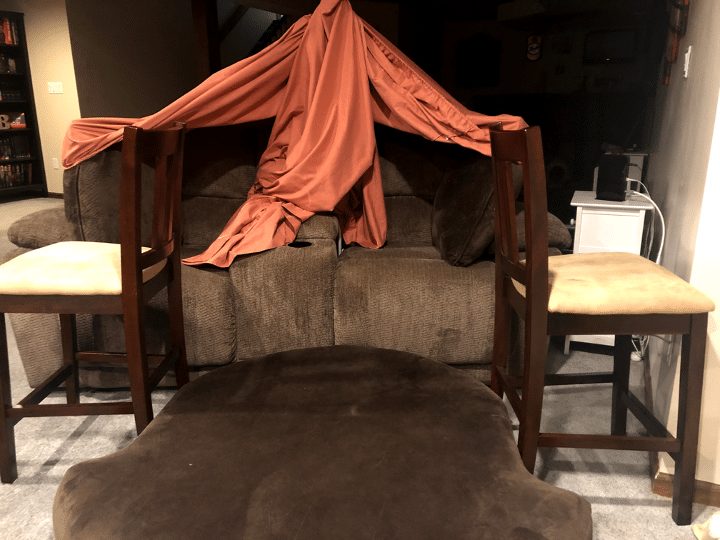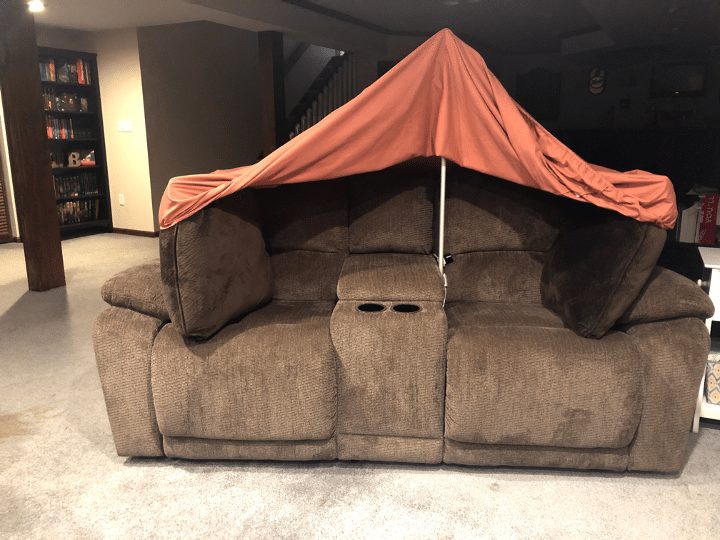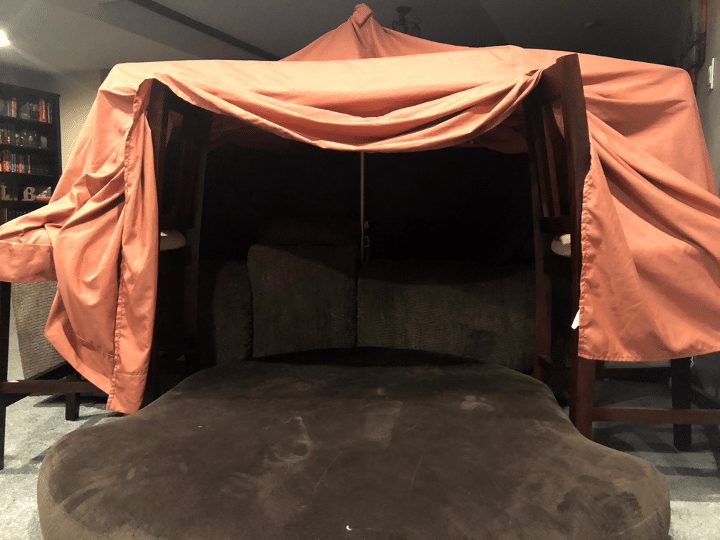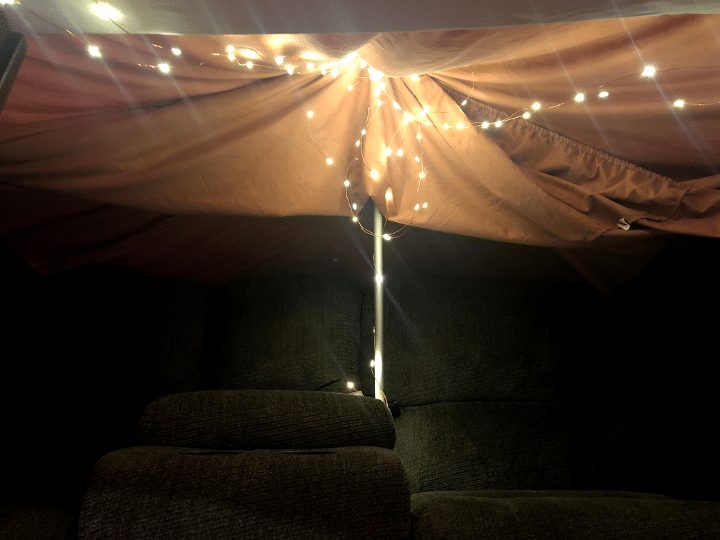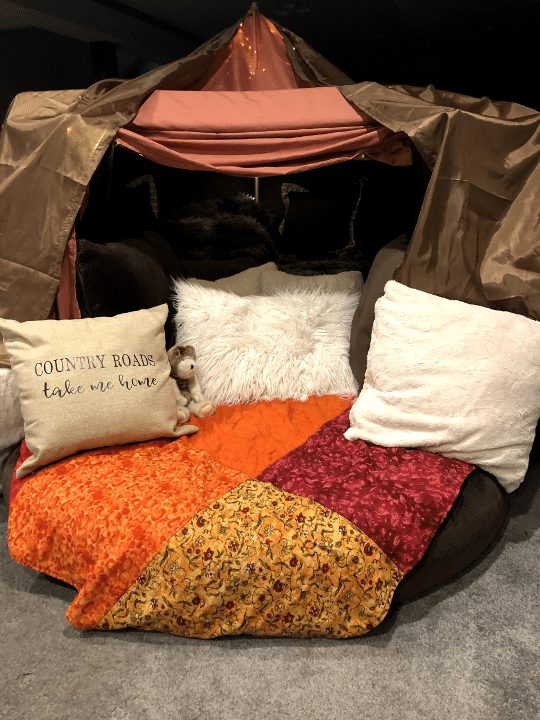Sometimes animal research expeditions or safaris that scientists participate in can last a long time. Camps are often set up in the savannah so researchers can be as close to wildlife as possible without disturbing animals’ natural behaviors. Here’s how you can build your own safari fort for you and your favorite stuffed buddy!
Materials Needed:
- Blankets
- Pillows or soft cushions
- A couch or an area that has space to fit inside
- Chairs or a small table for structure and support
- Something to secure blankets (string works)
- Lights
Directions
- Gather your supplies in the area you’d like to build your safari tent. If using a couch and chairs, try to set up your structure with your couch in the center, and the chairs in front of the couch on either side, facing outward. (Check our photo for reference!)
- If you’re using a pole to support the top of your tent, try to stick the pole down between the center of the cushions as safely (to you–and your couch!) as your can, like in our photo.
- Place your blankets on top of the furniture you’re using to make your safari tent. This will be the “roof” and should sit lightly on top. Make sure your blanket is long enough to cover the entire tent structure and leave an opening at the front for easy entry.
- Your safari tent can be as big or as small as you’d like. If you have multiple blankets, you can also try to make a door flap at the entrance to your safari tent. Researchers sometimes have these door flaps to hide themselves from animals so they don’t scare or interfere with them. Make sure your blankets are supported on top of your safari tent—if they’re loose or in danger of falling, try to make the safari tent smaller or use something like clothespins or books to weigh them down and secure them. If you’re having trouble, ask a grownup for help! *Do not enter your safari tent until you know for sure it won’t fall down*
- If you have lights, ask a grownup to help you set them up. Any type of light works well in a safari tent, and is important for nighttime study. If you don’t have string lights like the ones pictured, you can also use flashlights.
- Finally, decorate the inside of your safari tent by bringing in cushions, pillows, or extra blankets. Be sure to bring all of your stuffed animal friends and some snacks inside while checking out the rest of the Stuffed Animal Safari activities!
